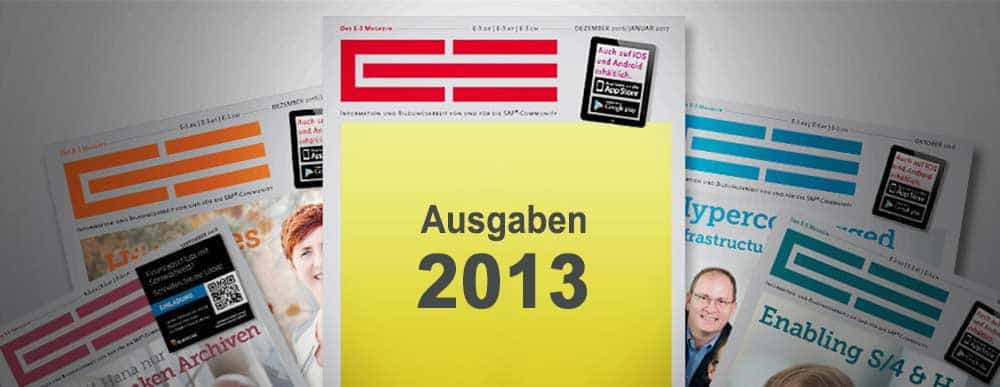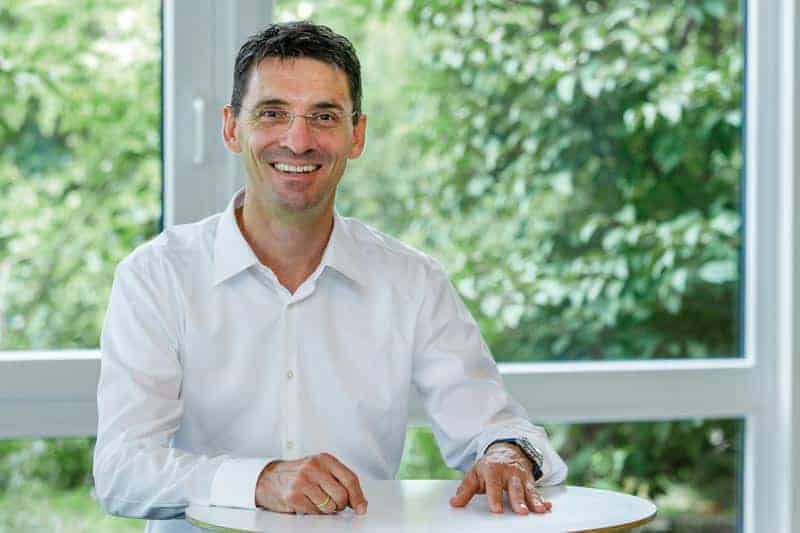

E-3: One-fifth of DSAG members consider in-memory to be a relevant topic today or to become important within the next year.
According to DSAG, however, widespread use is hardly to be expected in the current year. Can SAP be satisfied with this development?
Bernd Leukert: You have to put that in context. In-memory for OLTP is brand new and so are our applications for it. And an investment must always be worthwhile for companies - the more applications that are available on Hana, the greater the added value.
That's why the Suite on Hana launch was so essential for us. We expect that the Business Suite powered by Hana will be able to achieve this critical value-added momentum for the majority of our customers.
E-3: What's happening for that right now?
Leukert: We are currently working with more than 50 innovative companies in the ramp-up for Suite on Hana - these are the early adopters. The topic is on the agenda of almost every SAP customer and is a central point of discussion.
We have the first customers who are discussing and implementing a Hana roadmap for all applications with us. They believe in the added value - whether it means they can enable new business processes or accelerate critical processes to plan more accurately and flexibly, or achieve a substantially simplified system landscape in the medium term.
E-3: According to the DSAG investment survey, there are still many unanswered questions regarding the use and operation of Hana. Does SAP still have homework to do here or is it just a communication problem?
Where does the Business Suite powered by Hana stand today in terms of disaster recovery, backup, metro and geo-clusters, failover?
Leukert: SAP Hana is a young product and we are also working flat out on the functions for operation - but since SPS4 in May 2012, we have been calling Hana "Data Center Ready for production". This is also confirmed to us by customers. We also run mission-critical systems such as CRM on Hana productively in our data center.
E-3: What does that mean in concrete terms?
Leukert: Example of high availability within a data center: In the event of a system or hardware failure, the standby node or system takes over. This also works in terms of disaster recovery between different data centers.
I think it's both true: we still have some way to go to further simplify operations and make them more secure, but the advances are not yet sufficiently known in the market. That is certainly also due to the speed of innovation in Hana.
E-3: DSAG says that 41 percent of the users surveyed are not at all concerned with in-memory. Does this result match SAP's experience? How do you interpret this high level of abstinence on the part of DSAG members from a definitive future topic like Hana?
Leukert: In my many conversations with CIOs, COOs and CEOs, there has not been a single instance where a customer has said, "Hana is not for us." Every customer understands that this is a technology that can potentially transform their industry.
And in this context, they are looking at in-memory and Hana. For some customers, this is currently a topic at the strategic level - i.e., it has not yet arrived operationally in IT; for other customers, it is a question of the timing of an introduction. But I have yet to meet a customer who is not dealing with the topic at all.
E-3: What are the motivations?
Leukert: In my opinion, a CIO must get to grips with Hana if he does not want to miss out on the megatrend of the digitized enterprise.
As far as I know, the DSAG survey was before the announcement of the Business Suite on Hana. I would be curious to see how that survey would turn out today.
E-3: You will be giving a keynote at the In-memory Computing Conference 2013 in Frankfurt/M. What will be your core message and why do you think SAP existing customers should attend this Hana conference?
come?
Leukert: At IMCC in Frankfurt, I will talk about the benefits Hana can bring to business applications and what this means for business processes. In doing so, I will look at different customer models and show how they can define their business processes with Hana, accelerate the processes in their company and simplify the technology landscape.
For our customers, this conference is certainly an excellent opportunity to be inspired by what Hana can make possible in their company - not only through the presentations, but also in direct exchange with each other.
I am convinced that it can be valuable for any company because we can then already report on the first results of active customer implementations.

E-3: Marco Lenck, CEO of DSAG, has said: "It will be interesting to see whether investment plans shift in favor of Hana during the course of the year. In any case, we expect SAP customers to take a strategic look at the topic.
This is where SAP is called upon to provide good examples." On January 10, 2013, at the presentation of the Business Suite powered by Hana, Prof. Hasso Plattner said that each customer must find its own added value with Hana.
Who is right now? Marco Lenck, who demands that SAP present good examples, or Hasso Plattner, who uses design thinking to call on SAP's existing customers to take responsibility?
Leukert: Hana is the first technology-induced innovation since R/3. By that I mean: Since R/3, it was more concrete questions from customers about how we can help map or improve specific processes.
With Hana, the question is the other way around: We have a great, powerful technology: How can I use it to reinvent, improve, or simplify my business processes? Questions like this need close cooperation between the customer's business vision and SAP's technology expertise - where these two come together, real business innovation can take place.
E-3: So you have to approach each other?
Leukert: Yes, you have to bring both sides together. On the one hand, this means that customers not only put business transformation on their agenda, but also implement it.
SAP, on the other hand, will be challenged to gather best practices through its large customer base and share industry examples with a broader audience. The power of innovation has shifted the focus from scalability and stability to innovation and change.
To remain competitive, companies must see this challenge as an opportunity for renewal. SAP is ready to take the new path with customers and redefine the industry standard for business processes - always in close cooperation with our customers.
E3: Thank you very much for the interview.






